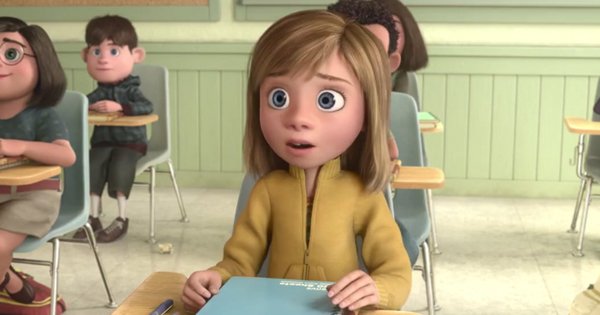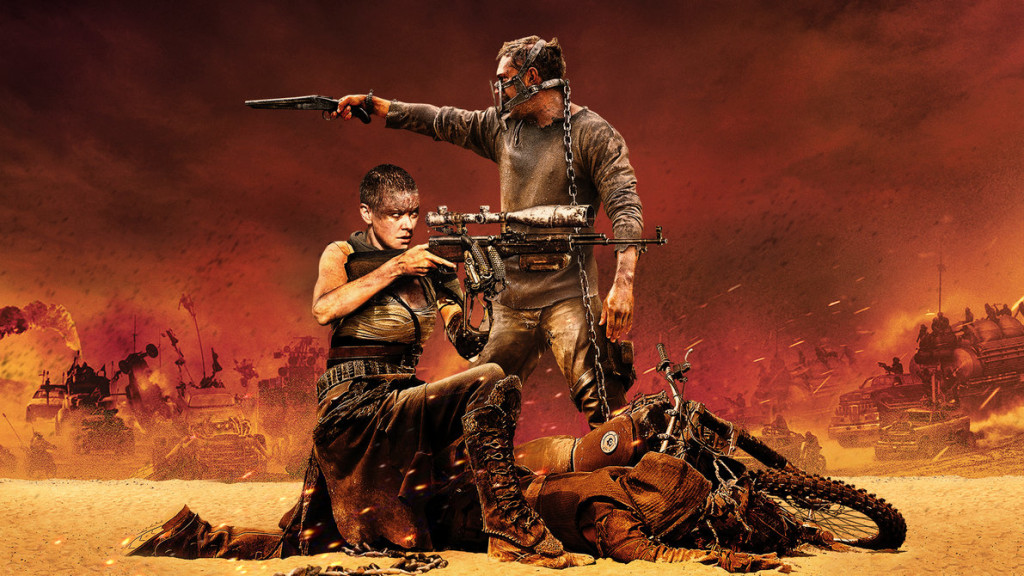Search Results for: 10 tips from
Hey guys. We’re going to jump back into regular posting next week. For right now though, I have a special treat for you. A NEW Scriptshadow Newsletter!! If it’s not in your Inbox, make sure to check your SPAM or PROMOTIONS folders and you should find it. I review an awesome screenplay by one of the hottest screenwriters in the business. I give you the matchups for our Scriptshadow Tournament semifinalists. And, as always, there are lots of screenwriting tips and links, as well as Scriptshadow consultation deals, inside.
If you don’t see the newsletter in any of your folders, e-mail me at Carsonreeves1@gmail.com with the subject line “NO NEWSLETTER” and I’ll send it to you personally. If you want to be added to the newsletter, e-mail me at the same address with the subject line “NEWSLETTER” and I’ll send. If you’ve been on the list and still never receive newsletters, I recommend signing up with another e-mail address.
ENJOY and I’ll see you in the NEW YEAR!
So I want to share a rare experience with all of you, something that doesn’t happen to me often these days. I sat down to watch a movie, and for the next 100 minutes was completely unaware that I was watching a movie.
In my reality, everything is analyzed. Even if I don’t want to analyze, I analyze. Oh, what a perfect setup for that character. Oh, what a terrible way to open that scene. No! You could’ve milked that moment so much longer. Ugggh, you should’ve focused the story on this character. He’s so much more interesting!
None of that happened in this movie. What movie am I talking about? It’s Mike Birbiglia’s film, Don’t Think Twice (Here are Mike’s six tips for making it in Hollywood). It’s about a long-time improv group, all of whom are in their 30s. When their improv space closes down, they have to face the reality that maybe this is it. Maybe they need to go out into the real world and give up on their dreams.
Things go sideways when the flashiest member of the group, Jack, becomes a cast member on Weekend Live (a “Saturday Night Live” stand-in). Not only is there all this pressure on Jack to succeed. But there’s pressure on him to bring his friends up with him. In the end, that pressure becomes too much for everybody and… well, I’ll let you watch it yourself to find out what happens.
So what made this experience so impactful?
One thing: The characters.
Whenever I see a writer pull great characters off, I take a good two hours afterwards to digest it all. Because character-creation remains the single most difficult thing to do in screenwriting.
Anyone can create characters. You think of a person then give them a name. And sadly, that’s how most screenwriters approach character creation. But to build characters who move you? Who leave you in tears? That’s the real test.
How did he do it? How did Mike Birbiglia move someone who’s used to all the tropes and sees them coming from a mile away? Let’s see if we can shed some light on that question.
First of all, there’s no question that the performances in “Don’t Think Twice” were amazing. I know it doesn’t help us as screenwriters to say that. But we can’t deny that that’s part of it. However, actors can’t make chicken salad out of chicken shit. They need a foundation to start from. And if the foundation of their character isn’t in the script? Forget about it.
One thing I noticed is the same thing I was talking about in Isle of Man, which is this notion of specificity. Specificity isn’t listed in most character creation articles because it’s more of a peripheral thing. But boy does it have an effect on the finished product.
Just like Younger knew the motorcycle racing world and the people in it like the back of his hand, Birbiglia knows the improv world and the people in that universe like the back of his entire body. I wouldn’t be surprised if these characters were amalgams of many people he’s known in the community for years.
The girl who’s working on that graphic novel for the ninth year and who everybody knows will never finish it. The guy where improv comedy is the only thing he has in his life. The teacher who teaches all these successful people, yet isn’t successful himself. The girl who can’t get out of her own way, sabotaging every chance at success she gets. The woman who’s gotten a free ride from her rich parents her whole life and has never known the meaning of hard work.
Specificity is the fruit of write-what-you-know’s labor. It isn’t so much the world that matters when you write what you know. But the characters, since those characters will be based on the types of people you’ve had personal experiences with. That’s what makes them SPECIFIC.
And the more specific you can make a character, the more we will believe that they’re real. And the more we believe that they’re real, the more we’ll root for them. And the more we root for them, the more emotionally devastated we’ll be when they don’t achieve what they set out for.
With that said, specificity is not about reams of character detail. It doesn’t mean that a character has to do something specific and unique on every single page. It merely means that the character is specific to the world they’re in. That they feel true and honest and not “made up” by a writer who’s clearly never stepped foot in the world he’s writing about.
If you look back at my above character descriptions, they don’t go for pages on end. They’re each simple and to-the-point. “The girl who can’t get out of her own way, sabotaging every chance at success she gets.” Not enough screenwriters do this – come up with that single specific sentence that identifies their character. As a result, they’re never sure who that character is. And you can feel that when they write them. You can feel that they’re searching for that character all the way until the final page.
There are other things going on here as well. These are all underdogs (an underdog is one of the easiest ways to get an audience to root for your character). They weren’t the popular kids at school. They were the nerds. And this is their only chance at becoming the popular kid. And you can see how much they want that. And because they want it, you want it for them.
But there’s something new I found in this movie. And this is going to sound cheesy, but I believe there’s something to it. The power of friendship. When two or more characters love each other, it’s like they double the power of the characters as individuals.
Because we don’t only want the character to succeed for themselves. We want them to succeed for their friend. We saw this on display in one of the greatest movies ever made – The Shawshank Redemption – with Andy and Red. Each of them were wonderful characters individually. But, in the end, it was that we wanted them to win together. That’s what sparked our tears when they meet up in Zihuatanejo in that final shot.
And I saw that here with this group. You got the sense that they all loved each other and it was “them against the world.” So when Jack makes it and that results in the group fractioning off, the engine that drives the story isn’t a goal, like we traditionally talk about on Scriptshadow, but rather our desire to see the group get back together, to be happy again.
I haven’t come up with a definitive model on how to do this, but they used it for the last fifth of “Shawshank Redemption,” after Andy escapes. And they used it for the last third of “Room,” where “Ma” was placed in a mental hospital. These are two of the most emotionally powerful movies in history, which is how I know this is something worth looking into further.
Finally, I’m a huge believer that a movie must end on some form of hope. You can take us to the lowest of lows, rake us through the shitshow of life. But if you don’t provide us with some sort of hope at the end – no offense to you or your writing, but fuck you. You wasted 2 hours of our lives.
The best part about “Don’t Think Twice” is that it’s able to provide us with hope without selling out. By “selling out” I mean not everyone gets on Weekend Live. Instead, the group goes its separate ways. And yeah, some of them quit improv. But everyone’s got a plan. Everyone’s going to keep fighting this complex ever-changing organism called life. And that’s all we need from an ending. To know that the characters aren’t going to give up on the world.
It capped off one of the most poignent and moving films of the year. Check it out if you haven’t already, and share you character observations in the comments.
So I want to get into some advanced screenwriting stuff today, but before I do, I need to relay an encounter I just had with a screenwriter. A mutual friend introduced me as “Someone who could offer advice,” to the young gentleman and the writer immediately went into this long spiel about how hard it is to get into the industry and how no one wanted to read his scripts and when they did, they “didn’t get them” and something something “nepotism.” After this endless rant came to a close, I asked him how long he’d been writing screenplays. “A year and a half.” I internally groaned.
Seriously?
Let’s go back, shall we?
When I used to teach tennis, there were stages to a player’s development. First, they had to learn how to hit the primary shot – the forehand – correctly. I would take them through the shot slowly, physically guiding their arm through the motion. Then I would drop a ball and have them hit it, from which all form went out the window. And I’d have to re-focus them to do the correct swing regardless of the fact that there was now a ball involved.
Once they got this, I would move back a few feet and toss the ball to them. When they got good at that, I would move back further, tossing again. Eventually I would move to the other side of the net, and soon-after, I would be “feeding” them the ball from my racket. We’d do this for countless hours, countless lessons. And then you know what we’d do? We’d start over and do the same thing with the backhand.
And then I’d teach them how to serve. And then I’d teach them how to hit volleys. And then I’d teach them how to rally from the baseline. This would take months, a year. And you know what? We hadn’t even learned how to play the game yet. So I’d have to teach them that. And then I’d play with them. And then I’d have to teach them how to direct the ball. And then I’d have to teach them different spins on all the shots, variations in spins, and when and why you would want to use them. Then I’d have to teach them strategy. When to play consistently and when to go for the winner.
And even after I taught some of my better players this over the course of, say, two years, they’d still only be, if they were lucky, bottom-level city players. They weren’t even close to locally ranked. If I would’ve sent them into a tournament, they’d probably lose 6-1, 6-0 in the first round.
I want you to think about that for a second. My most dedicated players with a solid amount of talent couldn’t even get locally ranked after 2 years of playing. To give you some perspective on that, a local ranking is still considered being a “scrub” in tennis vernacular. It’s only when you get to the high local rankings in a major city that you’re considered “good.” And even then, you’re still ranked low regionally. And don’t even get me started on where you’re ranked nationally (you aren’t).
And even if you manage to somehow make it into the top 20 nationally, which is an AMAZING fucking achievement – these guys can fire a 130 mile an hour serve past you in their sleep – you’re probably ranked between 250-350 in the world, which means you’re making $40-50k a year, all of which you’re spending on travel so you can stay on the circuit.
What’s the lesson here?
Don’t play tennis.
But on a more serious note, here’s my point: mastering anything is hard. And there aren’t any shortcuts. Screenwriting may not be as physically demanding as tennis or basketball or even golf. But trust me, it requires the same amount of dedication. Because everybody’s trying to do it. And the only way to rise above others is to do it more.
The one thing I did see in tennis is that when a student dedicated 10 hours a week to practice, as opposed to 5, or 4, or 1, they got better a lot faster. And the guys who did get ranked? They worked more than anyone. They’d practice at least 14 hours a week and usually more. So by doing that one simple thing – writing more – you can improve your chances dramatically.
But there’s one thing I noticed from both my playing and teaching days and that was, at a certain point, every player would reach a ceiling. And only a select few would break through it into that “upper tier.” Contrary to popular belief, it wasn’t always talent that got them there. Yes, talent played a part in it.
But some guys made it through that ceiling purely on heart. Because they couldn’t see any other option than breaking through and they would push as hard as they could for as long as they could until they made it. Still others just worked their fucking asses off. They outworked the system. If their competition practiced 30 hours a week, they’d practice 40.
All of this is a rather elaborate way of setting up today’s topic – advanced screenwriting. For those of you who have hit all the forehands (learning the 3-Act structure) and the backhands (you no longer write on-the-nose dialogue), and the serves (show don’t tell), and have actual confidence that you can put a cohesive and entertaining story together for 110 pages, but you still can’t seem to break through the ceiling, here are three tenets of advanced screenwriters you should be working towards.
The ability to make the complex simple – A screenplay can have complex ideas and complex characters. But, at its core, it should be simple. If there’s one mistake I keep seeing all the way up to the top ranks in screenwriting, it’s over-complication of the story. Screenwriters make things overly complex and, as a result, their story gets muddled. If a story is muddled for as little as 5 pages, a reader will mentally check out.
The reader must always know what’s going on. Even if you don’t want them to know what’s going on, they should know that they don’t know what’s going on only because you don’t want them to, not because you don’t know. A good example of a movie with complex ideas and a complex structure that strived and succeeded in making things simple was Inside Out. Despite dual storylines (in and out of Riley’s brain), and a lot of world-building, the plot boiled down to two SIMPLE adventures. Joy trying to get back to headquarters and Riley wanting to go back to Minnesota.
Failures in this arena would be films like Interstellar and The Accountant. I’m not saying these were bad films. But they were movies where the scripts got away from the writers due to overcomplicating the story. I mean Interstellar starts off being about saving earth and then becomes about what? The art of space travel? The Accountant is about an accountant who’s also an occasional hitman? What? And J.K. Simmons is trying to find him because why? He’s bored? And what is Ben Affleck even trying to do for this company he’s working for? And why is an autistic accountant a hitman again other than that’s a character an actor would want to play?
Take the extra time to simplify your most complex elements and make sure your core storyline (the engine that’s driving your characters towards their goal) is simple as shit.
A character who not only changes, but changes realistically – Intermediate screenwriters understand the value of a character who changes. Seeing a character become a better person over the course of their journey is one of the most moving and powerful components you can add to your screenplay.
But where all the intermediates get stuck is that they change their character in a Screenwriting 101 manner. That means that the character changes, but it doesn’t feel realistic. They only change because the writer needs them to change to complete the arc, not because, if this were real life, the character would really change.
That’s the key phrase you want to implant in your head – “if this were real life.” Would your character really change in this moment? Or are they just changing because it’s the end of the story and your screenwriting teacher told you this is when the change would happen?
If the change doesn’t feel realistic, the solution may be to add character-change “checkpoints” throughout the script. These are moments where your character is being tested on their limiting belief/flaw that, through their actions, show they’re not ready to accept the change yet. If we see your character being tested repeatedly, we’re more likely to believe that, on that final test, they’ll succumb to change.
A good example of this would be Alan Turing in The Imitation Game. Turing is arrogant and unreceptive to help, preferring to do things his way and alone. It’s only through repeated opportunities (checkpoints) to bond with and trust his team that he eventually realizes he needs their help to solve the problem. And so he changes.
Thematic consistency – Thematic consistency is the act of making sure everything in your script comes together and operates on the same wavelength. I read too many scripts where the sum is not equal to the parts. Each choice is isolated, an idea that works in its own little bubble, but does not coexist with the other choices harmoniously. A script is like one big thesis statement. Every portion of it should support the operating thesis.
If you were writing a movie about racism, you don’t have your fourth most important character be a postal worker who’s trying to get his engineering degree. What does that have to do with racism? It’d be smarter to make him, say, a black cop who works in an all-white precinct. This way, you can continue to explore the “thesis” of your story through another avenue.
This doesn’t mean you have to be on-the-nose about it. You can explore it through irony as well. For example, in Bad Moms, one of the characters is a really good honest dad. That contrast of pitting a genuinely good father against crazy rule-breaking moms allows you to explore the theme, just from the opposite side. Had that dad been, say, a blind professor with Tourette Syndrome, you would’ve gotten some laughs, but the lack of thematic consistency would’ve confused the audience.
So there ya go, guys. Keep in mind these are just three tenets. There are a ton of other things that make up “advanced screenwriting” which I’ll be bringing up over the coming weeks. But I just wanted you guys to have some clarity on what you’re aspiring to. Feel free to share your advanced screenwriting tips in the comments!
HOW TO IMPROVE YOUR FOREHAND: Play tennis? Here’s a tip. When you bring your racket back to hit your forehand, don’t have a death grip. Loosen the grip so you can feel the weight of the racket in your hand. Now let gravity start the racket drop (instead of pulling the racket down artificially) and use the momentum of that drop to accelerate out through the ball. With a looser grip, it’s essential that you hit the ball right in the middle of the strings, or else the racket will twist in your hand. So watch the ball!
A long-time Scriptshadow reader e-mailed me yesterday with this question: “Carson, something I’ve been thinking about but want your insight. What do you think is the skill in the screenwriting profession in which demand is higher than supply? I know in general that it’s a buyers market but there have to be certain skills that provide the most value to a producer, studio, actor etc. Just want to know what you think that is.”
I wrote my reply within five seconds of reading the question. This is what I said: “Character! Character character character. Creating characters that audiences care about, that move audiences, that feel like real people. It’s the one area that only a few screenwriters truly know how to do. Master character and Hollywood will throw millions at you.”
The truth is, Hollywood thinks they’ve got the concept thing nailed down. Every executive in every office in ever major studio believes they have a dozen kick-ass movie ideas. These executives also each know a dozen screenwriters who can adapt their idea into a structurally solid screenplay.
But you want to know what they can’t do? What they don’t have a recipe for? CHARACTER. They’ve seen it time and time again. They come up with a concept. They get a writer to write a fully-functional perfectly-structured screenplay. And yet when they send it to their bosses and their peers, the reaction is, “Ehhh.” Or “It was all right I guess.” Or “Not bad.”
What happened? Why the apathy?
The apathy is because there was nobody in the story who made you care. Made you care about them, made you care about what they were doing. The characters were empty vessels – plot pieces constructed to move the story forward and nothing else.
The reason you can do so many things right and still come up with a lame screenplay is because you haven’t constructed characters THAT MAKE US FUCKING FEEL ANYTHING! If we’re not FEELING SOME KIND OF EMOTION while your characters move through the story, you don’t have a script.
Let’s make that clear. If you’re not eliciting emotion through your characters, nobody will care about your script. This is the million dollar secret sauce that will make you a professional screenwriter.
Make us fall in love with and care about your characters like real people and I PROMISE YOU you will be living in the Hollywood Hills. Because VERY FEW SCREENWRITERS can achieve this. In fact, I’d say there are maybe 20 in all of Hollywood who can build characters and make you care about those characters on a consistent basis.
So how do you achieve this? It’s not easy. Part of creating great characters is this innate ability to turn thin air into a living breathing individual – to create someone with depth and specificity who’s original and compelling. And some writers are better at that than others. But there are some things everybody can do to tip the character-creation scales in their favor. Let’s take a look at them.
Authenticity – This is the #1 thing you have to get right. If we don’t believe the character really exists, then none of the other things I list below will matter. So how do you create an authentic character? Simple. With every action they perform, with every line of dialogue they say, ask, “Is this what they would do in real life?” The classic example of this is when a street thug puts a gun to your hero’s head and your hero says, “Do it. Pull the trigger.” BULL-FUCKING-SHIT. Nobody does that in real life. In real life, when someone puts a gun to your head, you cower like a little girl. The further away your character’s reactions are from reality, and the more instances where they do unrealistic things, the less we believe in them. If you want to see a movie where the characters act as authentic as I’ve ever seen, watch Room.
Specificity and Originality – 99% of writers offer up general characters who we’ve seen before. If they’re writing a Western, the main character is a mysterious man who comes into town with an axe to grind. If they’re writing a buddy-cop movie, one character is a loose cannon who says what’s on his mind while the other is a conservative who always gets the job done. It’s not that you can’t make these characters compelling. But when you give us something that we’ve seen so many times before, we become blind to the character. They can be wonderful but all we see is the 30 other characters they was based on. You have to give us characters who don’t feel like people we’ve seen before. Yesterday, we had a 13 year old female serial killer. I haven’t seen that before. — On top of that, you need to build specificity into your characters. If a character doesn’t have anything uniquely him, how is he going to stand out? Do me a favor. Think about the strangest person you know. Right now. Write down the five strangest things about them. Now let me ask you, have you ever incorporated anything like these traits into any of your characters? I’m guessing no. Yet it’s specific things like this that make your characters feel different. And characters who feel different? FEEL LIKE REAL PEOPLE.
Sympathetic or Fascinating – Your character has to be one of these two. If they’re not, we won’t care where they go, who they talk to, or if they get the god damned Golden Chalice or not. Sympathetic meaning we feel for their situation. Whether they’ve been taken advantage of, beaten down by life, or just have to deal with a dickwad boss every day, sympathy is one of the easiest ways to get us to care about a character. “Fascinating” refers more to villains and anti-heroes (but can refer to the occasional traditional hero as well). These are people who don’t get our sympathy vote, but who are so interesting, we want to watch them regardless. Figuring out how to make a character “interesting” is a bit like trying to catch a chicken, but one of the classic ways is to have the character battling two-extremes inside of themselves. Darth Vader, Michael Corleone, even Alan Turing in The Imitation Game. Note how all of them are fighting themselves on some level. That’s interesting, isn’t it? On the contrary, when you just try to make your anti-hero or villain “cool,” that’s when we don’t give a shit (see the weird ninja villain in Elysium for reference).
Action and Choice – Compelling characters don’t go around saying, “I love you more than the wind and the moon” to their son. They rush to the son’s aid when the son is in trouble. Compelling characters don’t philosophize on what they would do if their wife was held hostage. We see their wife held hostage and watch what they choose to do. Action and choice are the best ways to tell us about your character. Both have their roots in the “SHOW” half of “show don’t tell.” In every scene you write, before you try to convey who your character is through a line of dialogue, first ask if there’s a way to convey the same thing through an ACTION or a CHOICE.
An unresolved inner struggle – Good characters are battling something inside of themselves. This battle can be broken down into four options. Option 1 is the past. Something has happened in the past that they haven’t resolved. They haven’t let go of a family member’s death, for example. Option 2 is a vice/addiction. Alcohol, drugs, sex. As long as you treat this with TRUTH (see above) and not simplistic casualism, this can work well. That’s because so many damn people can relate. Option 3 is a flaw that the character is aware of. A character who knows that people step on him and he doesn’t do anything about it, for example. And Option 4 is a flaw that the character isn’t aware of. This may entail a character who’s selfish. But it’s really up to you. Heck, you could make the Option 3 character the Option 4 character, and have no idea that he lets people walk all over him. — The idea with the unresolved inner struggle is that we’ll want to see if they can overcome the struggle. And, again, if it’s dealt with in a realistic way, and not a Screenwriting 101 way, this is the component in your screenplay that’s most likely to make your audience feel something. So it’s really important.
Unresolved Relationships – The more relationships in your hero’s story that are unresolved, the better the chance you have of delivering an emotionally compelling story to your audience. Fucked up Father-Son relationships are great for this. Fucked up Father-Daughter relationships as well. But it could be any relationship. It could be between two best friends who, after 30 years, don’t talk to each other anymore. As long as you do a good job setting up the situation, we’ll want to see if these two can find common ground again. This, along with overcoming one’s flaw or vice, is up there as one of the top ways to emotionally affect the audience. I read an amateur screenplay last year that was about this daughter whose father was a massive drug addict. And she kept trying to love him and trying to love him, but every time, he’d let her down. He’d choose the drugs over her. It was heartbreaking but also EXACTLY what you’re trying to achieve as a screenwriter. Create that unresolved AUTHENTIC relationship, draw it out over 2 hours, and we will be staring at our laptops with tears in our eyes when the script is over.
Now that you have a baseline to work with, you’re probably asking, where does everybody go wrong? Most screenwriters on scripts 1-5 believe that on the nose melodramatic scenes are the way to create great characters. For example, place a son and his father in a room and write a scene like this: “I loved you so much. But you never tried hard enough.” “Maybe if you would’ve encouraged me more.” “That’s what your mother was for.” “Until you left her.” Beat. “I still love you, dad.” “I love you, too.” Like, go fucking kill me and feed my dead body to the pigeons outside of the abandoned brad-making factories.
Characters talking deeply or talking about their feelings or saying what’s on their mind – These scenes create THE OPPOSITE of emotion in an audience. Since nobody talks like this is in real life, it’s the equivalent of announcing, “THIS IS A MOVIE!” which means the spell is broken and the audience no longer believes what they’re looking at. Creating realistic characters we’re emotionally rooting for is a lot more complex. Even more complex than what I’ve outlined here today. But at least now you have a starting point. Feel free to offer your own tips for creating realistic emotionally-affecting characters in the comments section.
Because, again, if you can master this one area, you will be in high freaking demand. Nobody knows how to do this shit right. I even see professionals screwing it up on a weekly basis (see all the over-cooked on-the-nose scenes in Batman vs. Superman for reference).
So in my most recent group of consultations, I got this question a lot: “What about my dialogue?”
I remember when I first got into screenwriting, I came across an interview where a professional screenwriter was asked, “How do you write good dialogue?” His answer: “Dialogue is the least important part of a screenplay. Learn everything else first.”
I subsequently discarded this screenwriter as insane, refused to watch any of his movies, and wrote a handful of e-mails to him explaining everything that was wrong about his proclamation that I never sent. But over time, I realized there was some truth to his statement. I mean how else do you explain writers rewriting dialogue the day of shooting a scene and coming up with something perfectly suitable?
What you eventually learn is that it’s the structure of the scene that enables the potential for good dialogue. Good dialogue rarely emerges on its own. For example, if a director came to you with a structure-less scene and said, “I need new dialogue here,” you’d be fucked. You could try and write some clever Quentin Tarantino shit with some Diablo Cody witticisms and a Paul Thomas Anderson monologue about milkshakes. But no matter what you did, it would be a mess.
However, if the director came to you and said, “Here’s the scene. This wife is about to cheat on her husband, and while he doesn’t know that yet, he’s suspicious of her recent behavior. This is their phone call. I need you to rewrite the dialogue,” now you have something to work with. You have some underlying tension in the scene. You have subtext. You have conflict.
With that setup, you could have a hundred screenwriters come in and write your dialogue and most of them would come up with something good. Why? Because there’s an underlying STRUCTURE to the scene that is built for dialogue. And that was the inspiration for today’s lesson. I wanted to look at the three big elements responsible for good dialogue.
Before we get to that, though, I want to make something clear. None of this will help if you don’t have the basics down. You can’t have a bunch of on-the-nose dialogue. You can’t have a bunch of melodramatic dialogue. The dialogue can’t be robotic. It’s got to sound like real people talking to one another. Ironically, there should be a slightly heightened quality to movie dialogue, yet not so heightened that you look like you’re showing off. And finally, like all of writing, there can’t be any laziness. Come up with a better word, a better sentence, a better analogy, a better turn-of-phrase. You have to try hard. When you’ve done all that, you’ll be ready for the below.
1) DIALOGUE FRIENDLY CHARACTERS
Last week a writer asked me, “Why does my dialogue suck in this scene?” I re-read the scene which took place between “the boring friend” and “the quiet guy.” In other words, of course the dialogue sucked. Neither of the characters was built for dialogue. If you want to write good dialogue scenes, you need characters who are good at talking. It’s no different than sending a couple of socially awkward introverts into a bar and telling them to pick up women. Their personalities aren’t built for that.
If you look at Pulp Fiction, one of the reasons the dialogue is so memorable is that the movie has a dozen characters who are dialogue-friendly. If you look at Deadpool, one of the reasons the dialogue rocked was because it starred the most dialogue friendly character of the year. Jokesters, anybody opinionated, motormouths, philosophical potheads, people who “just tell it like it is and if you don’t like it, fuck off,” really smart people who love to hear themselves talk, really dumb people who who love to hear themselves talk, weird people who have weird views of the world, idiots, the list goes on. If you want more good dialogue scenes, this is something you should be thinking about during the character creation stage. “Is this a character who’s going to say interesting things?” If you don’t have at least one of these guys, your dialogue is going to suffer.
2) CONTRAST
Many of the best dialogue scenes come from a contrasting dynamic. Two characters who are on different ends of the spectrum. Take one of the best dialogue movies ever – When Harry Met Sally. Harry was brash, opinionated and pessimistic. Sally was reserved, thoughtful, and optimistic. It was no wonder their dialogue was fun. Clementine and Joel in Eternal Sunshine. She was extroverted and a motor-mouth. He was introverted and chose his words carefully. 500 Days of Summer. He wanted to make it work badly and she didn’t. Silence of the Lambs. She was timid and scared. He was brilliant and manipulative.
What happens when you don’t have contrast? Let’s look at Mad Max: Fury Road. Great movie, right? But do you remember the dialogue? Did it stand out in any way? No, it didn’t. Why? Maybe the fact that Max and Furiosa were essentially the same person (alphas who did things their own way) contributed to the lack of interesting conversation. There wasn’t enough contrast in their dynamic. Not to mention, neither was dialogue-friendly. It should also be noted that “contrasting” can be momentary. It doesn’t have to be built into the characters from the get-go. For example, two characters who are similar may enter a situation where they disagree. In that case, the contrast is momentary, but it’s still contrast. It still enables the potential for good dialogue. With that said, it’s beneficial for your key characters to have a contrasting dynamic, since they’re going to be in the most scenes together. If they’re too similar or agreeable, you’ll have a lot of sub-par dialogue scenes.
3) THE NEGATIVE ELEMENT
Now this is a working theory so it’s not 100% there yet. But what I’ve found when I’ve broken dialogue down is that in almost every circumstance, the dialogue gets better when you introduce a NEGATIVE ELEMENT. The example I always like to use is a couple (NICK and LISA) talking at a diner. If all Nick and Lisa do is talk, that’s boring. But if we know that Lisa plans to dump (NEGATIVE ELEMENT) Nick at some point during the conversation, you now have interesting dialogue. And even if she dumps him at the start of the conversation (NEGATIVE ELEMENT) you’re going to have interesting dialogue.
Or maybe, for whatever reason, you want Nick and Lisa happy in the scene. That’s fine. But if you want to keep the dialogue interesting, you need to introduce the NEGATIVE ELEMENT somewhere else. For example, maybe Lisa’s abusive ex-boyfriend shows up (NEGATIVE ELEMENT) and sits a few tables away. I guarantee you the conversation between Nick and Lisa is going to get a lot more interesting, even if neither acknowledges that the ex has shown up.
Likewise, let’s say Nick’s just joined the army (I guess Lisa dumped him). If you write a scene where, when Nick gets to the base, he sits down with another soldier and the two discuss where he came from and how he got here, it’s going to be boring. But if the second Nick gets there, he’s thrown onto a Humvee to go check out an IED explosion, and the route they’re taking is laced with insurgents (NEGATIVE ELEMENT) and THAT’S when Nick is asked where he came from, the dialogue’s going to be a lot more interesting.
The negative element could also be subtle. Let’s say we’re following Nick and Lisa (he survived his tour of duty and they’re back together) to a concert. She’s been looking forward to this all week whereas he doesn’t want to be here (NEGATIVE ELEMENT). We’re more likely to get good dialogue out of that than if they’re both happy and excited to be here.
And it’s important to note that you have OPTIONS once the negative element’s been introduced. For example, Nick can be transparent about not wanting to be at the concert OR he can keep his feelings to himself. Either scenario will lead to some interesting dialogue. The idea is that a negative element creates conflict, and conflict necessitates resolution, or at least an attempt at resolution. So there’s more curiosity on the reader’s part on how this situation’s going to end.
Finally, just like there are characters who aren’t built for dialogue, there are genres and movie-types that aren’t built for dialogue. Dramas are one of them. You rarely come out of a straight drama going, “Wow, the dialogue in that was amazing.” It’s the same with Thrillers. Since they’re always on the move, you don’t have many long conversations. So it’s harder to write memorable dialogue.
For those types of movies, you want to place less focus on dialogue-friendly characters and contrasting dynamics and more on the NEGATIVE ELEMENT. As long as you’re introducing negative elements into your scenes, whether they be from the characters themselves or from outside forces, it should lead to better dialogue.
Negative Element Theory reminds me of Rashomon both in its simplicity and complexity. Feel free to comment on it, as well as offer your own dialogue tips, in the comments section.







